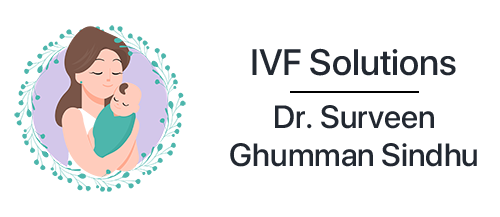Intrauterine Insemination (IUI Treatment)
It is a simple technique that involves the deposition of a washed semen sample into the woman’s uterus around the time of ovulation.
Get Free Consultation
Explanation
Intrauterine insemination (IUI) involves a laboratory procedure to separate fast-moving sperm from more sluggish or non-moving sperm. The fast-moving sperms are then placed into the woman’s womb close to the time of ovulation when the egg is released from the ovary in the middle of the monthly cycle. It is used as an intermediate level intervention prior to proceeding to in vitro fertilization (IVF).
It is essential that your fallopian tubes are known to be open and healthy before the IUI process begins. The second essential requirement is that there is no severe problem with sperm numbers or sperm quality. The intrauterine insemination success rate is up to 12- 20% per cycle. It is recommended that at least 3-4 cycles of treatment are attempted before considering other options.
Indications
- Ejaculatory dysfunction (including sexual dysfunction and impotence)
- Severe vaginismus (Where woman is unable to have an intercourse)
- Cervical factor infertility
- Mildly Low sperm count and motility
- Unexplained infertility
- Stage I or II endometriosis
- Absent or defective ovulation as in PCOS
- Absent sperms (azoospermia) – For Donor sperm insemination
Did You Know?
The intrauterine insemination success rate is up to 12- 20% per cycle
Treatment Protocol
Ovulation Induced & Semen preparation
The woman begins taking oral or injectable medication to stimulate the growth and maturation of her eggs. Oral medication is taken for 5 days and injectable medication is usually taken for 8-12 days based on how the ovaries respond.
Ovulation Induced & Semen Preparation
Once a “ripe” egg is present, a patient receives a “trigger shot” , that causes ovulation within 36 hours. This helps to time ovulation & identify the right time to do IUI. IUI is done 34 -38 hours after the injection. Male partner provides semen sample. This is prepared by washing in a way that only the highly motile sperms are separated out for use thus increasing chance of pregnancy.
Insemination Procedure & Followup
Just like a routine pelvic exam, a woman lies on an exam table. The sperm sample is injected into the uterus through a thin, long, flexible catheter. The entire process is virtually painless and takes seconds to complete. You would be expected to lie for 20 minutes after the procedure. A pregnancy test is advised 15 days later.
Why Surveen Ghumman Sindhu?
Our Success Story
I can’t thank Dr Surveen enough for all the kindness and professionalism shown throughout our treatment. I felt a personal connection with all the staff members as each was so caring and made me feel so comfortable at all times.
I can’t thank Dr Surveen enough for all the kindness and professionalism shown throughout our treatment. I felt a personal connection with all the staff members as each was so caring and made me feel so comfortable at all times.
I would recommend without a doubt the Max Fertility Department to couples who want an honest and most reliable treatment, the best doctor I could have ever had was Dr Surveen whom I am ever grateful too.
I will surely return for future treatments once we decide to extend our family further.
S Chohan, UK
We had consulted 3 doctors (who performed 4 unsuccessful IUI’s) before meeting Dr. Surveen for discussing our ‘unexplained not able to conceive issue’. She is so gentle and answered our queries with such grace and patience that we got confidence in our first meeting.
We had consulted 3 doctors (who performed 4 unsuccessful IUI’s) before meeting Dr. Surveen for discussing our ‘unexplained not able to conceive issue’.
She is so gentle and answered our queries with such grace and patience that we got confidence in our first meeting that for her we are not merely clients, but patients, for which she has to give her best and she did the same.
I had my 1st successful IVF cycle completed from her and now I am 12+ weeks pregnant. Finally she referred to us a good gynae as well for further proceedings.
Thanks Dr. Surveen, wish you all the best and keep providing your kind services to people. The world needs good doctors like Dr Surveen desperately.
Swati, India
We came to meet Dr.Surveen only for a 2nd opinion, but talking to her about our journey and the way she comforted us by giving us confidence made us decide to go for our IVF treatment under her supervision only.
We came to meet Dr.Surveen only for a 2nd opinion, but talking to her about our journey and the way she comforted us by giving us confidence made us decide to go for our IVF treatment under her supervision only.
We are incredibly thankful that we decided to continue our treatment with Dr.Surveen and her team at MAX Panchsheel. Biopsy from the uterus lining showed I had tuberculosis, and immediately was put on TB medication for 6 months.
Best advised by doctor at the time of laparoscopy was to clip my blocked fallopian tube to further avoid ectopic pregnancy. After 6 months of medication we started again, strong & afresh. Subsequent to treatment my lining grew well and we conceived in my 4th IVF cycle.
Dr.Surveen and her team made this whole process so easy and comfortable for us during the entire period, be it constant motivational stories of the other patients, her advise to keep working throughout the process, guidance for meditation to reduce stress, unconditional support from sisters and the entire staff.
Vaibhav & Vaishali
Some Priceless Happiness
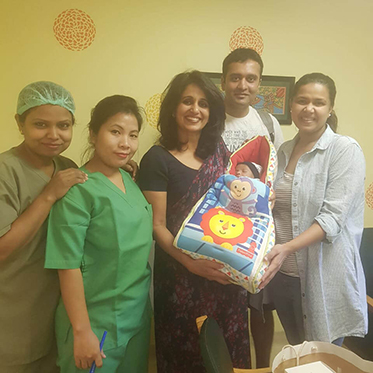
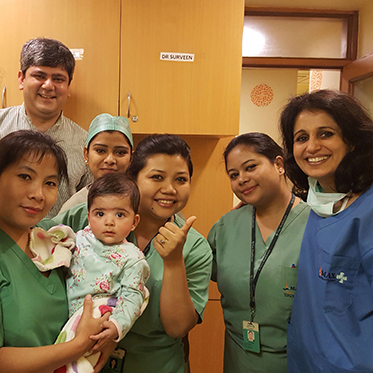
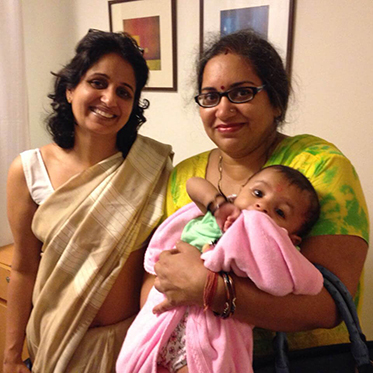
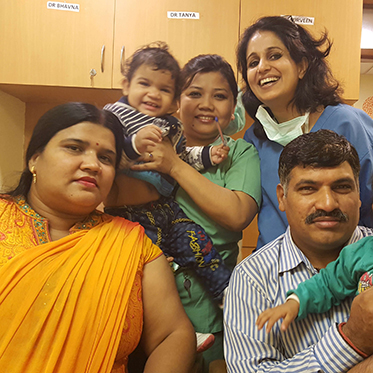

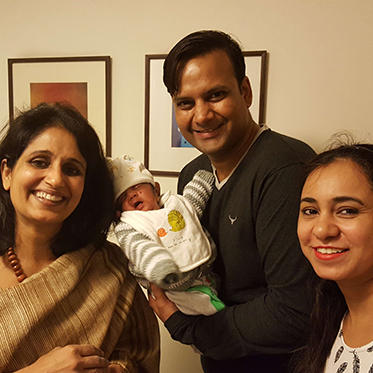
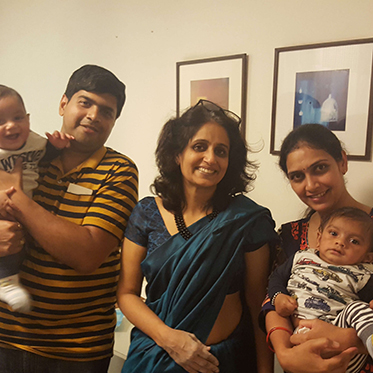
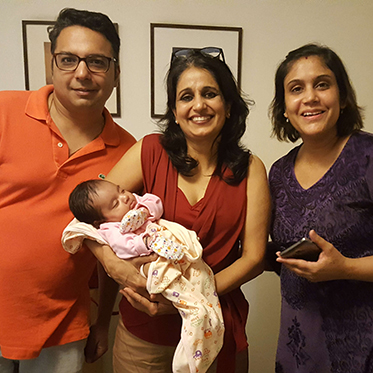
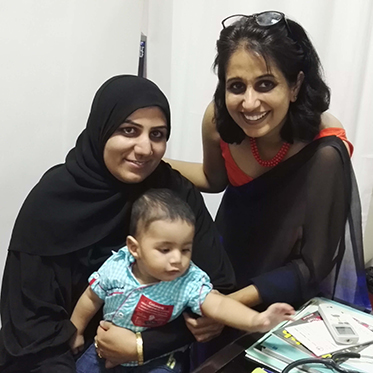
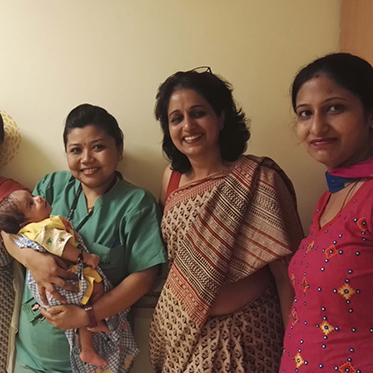

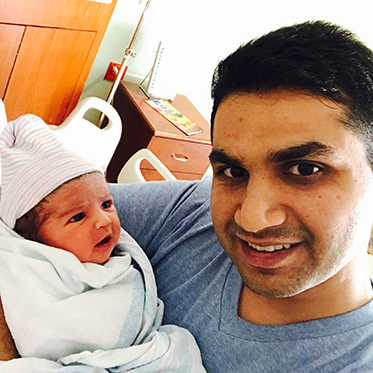

Frequently Asked Questions
Besides the number of sperm, the percentage with rapid forward-progressive motility and with normal morphology at the time of insemination are important to know. If the functional sperm count (number with normal morphology and rapid forward-progressive motility) exceeds 5 million; chances for pregnancy with well-timed IUI are excellent.
Normal, healthy sperm live approximately 48-72 hours. (Abnormal sperm may have a shorter life, which may vary according to sperm health.) At IVF India we know that washed sperm can survive in the IVF incubator for up to 72 hours. That would be considered the upper practical limit.
Eggs are able to be fertilized for about 12-24 hours after ovulation. The older the woman, the shorter this time becomes.
Once a patient has had 3-6 IUI cycles , they might consider moving to IVF as the chance of a successful IUI cycle is reduced.
Donor insemination (DI) uses sperm from a donor to help the woman become pregnant. IUI donor sperm in case –
- Male partner is unable to produce sperm
- Male partner’s sperm count or quality is so poor that it is unlikely to result in the conception of a baby unless IVF/intra-cytoplasmic sperm injection (ICSI) is carried out, for which the patient is unwilling
- Male partner has a high risk of passing on an inherited disease and patient does not want an IVF with PGD ( preimplantation genetic diagnosis)
- Male partner is chronically infected with HIV/ Hepatitis B in which case washing the sperm and inserting in uterus decreases virus in semen and hence decreases the chance of infection.
- Patient is single and does not have a male partner

